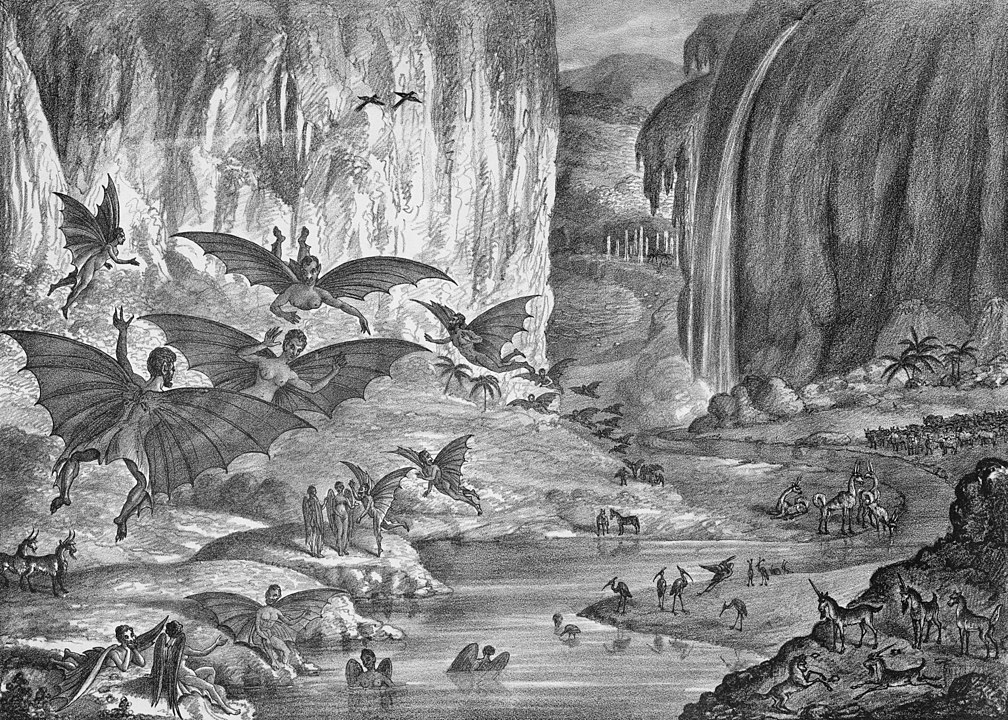On this day in 1835, the first installment of a six-part series in the New York Sun newspaper.
This series won over huge audiences with its claims that an astronomer and his huge new telescope had just discovered life on the Moon.
Today it’s known as The Great Moon Hoax.
It’s worth knowing here that 1835 is when the so-called penny press was popular.
Traditional newspapers sold subscriptions to wealthier, educated audiences, and published stories about serious issues.
These new papers sold to a broader audience; they sold for one cent a paper and made most of their revenue from advertising.
The content was less newsy, in many cases sensational or gossipy, and sometimes just not actually true.
Publisher Benjamin Day wanted a story that would help the New York Sun stand out in a city full of tabloid newspapers, so he and editor Richard Adams Locke came up with one.
They claimed that Sir John Herschel, who was an actual prominent British astronomer, had gone to South Africa, built the biggest telescope in history.
It was supposedly so good that it could see everything that was happening on the moon, which was a very busy place!
There were bright red flowers, horned creatures the size of bison, beaver-like beings that could walk upright and build huts, and winged batmen.
Also, there were lunar temples and colosseums made of rubies and sapphires.
Some New Yorkers believed all of this; some weren’t convinced.
But both fans and skeptics wanted to read every word.
The Sun became not only the best selling paper in New York, it was, by some measures, the best selling paper in the world.
And other papers in other places wanted to be best sellers, so they reprinted the moon series.
Rival papers pointed out all the flaws in the story, and called on the Sun to retract its wild claims, but publicly, the paper only said that it was up to British papers to confirm or refute.
People could have turned to John Herschel, the man who supposedly made all these discoveries.
Herschel really was in South Africa, but he wasn’t tracking bat-people on the moon.
When he heard about the articles, he said, “It is only a great pity that it is not true.”
Starting today, an auction of some rare US gold coins.
There are auctions like this from time to time, but what’s really unusual here is the source of these coins: 80s rocker, actor and avid collector Rick Springfield.
To paraphrase one of his songs, where can I find a collector like that?
The Great Moon Hoax of 1835: The Birth of Fake News? (Interesting Engineering)
Rick Springfield Collection of U.S. gold coins to be sold (Coin World)
It would be fantastic (but not fantastical) for our listeners to back our show on Patreon
Image by Benjamin Henry Day, via Wikicommons

